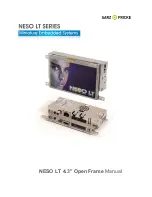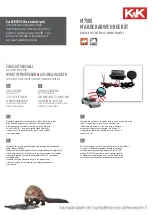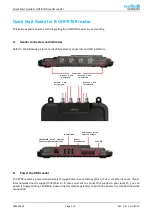
1.6.1.3
Triple Modular Redundant (TMR) Controllers
The TMR control architecture contains three controllers, three IONets, and singular or fanned TMR I/O Modules.
are much better with TMR controllers than with dual controllers due to increased fault detection capability. In
addition to all of the dual redundant features, the TMR controller provides three independent outputs to all TMR I/O modules
and the state variables between controllers are voted.
I/O Modules
Switches
Controllers
R
S
T
IONet <T>
IONet <S>
IONet <R>
Legend
UDH
TMR Mark VIe Control System
Note
The level of I/O reliability can be varied to meet the application needs because I/O redundancy can be simplex, dual, or
TMR.
In a TMR control system, all three controllers receive inputs from the I/O modules on all networks and transmit outputs on
their respective IONet continuously. If a controller or network component fails, the system does not require fault detection or
failover time to continue operating. All controllers transmit their copy of the state variables after the output packet has been
transmitted. Each controller takes the three sets of state variables and votes the data to get the values for the next run cycle.
40
GEH-6721_Vol_I_BP
GEH-6721_Vol_I Mark VIe and Mark VIeS Control Systems Volume I
Public Information
















































